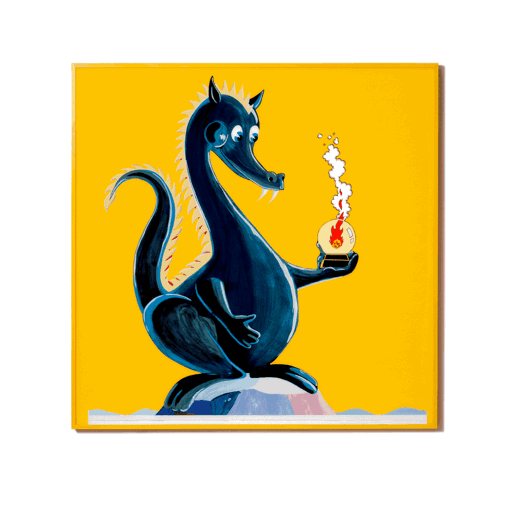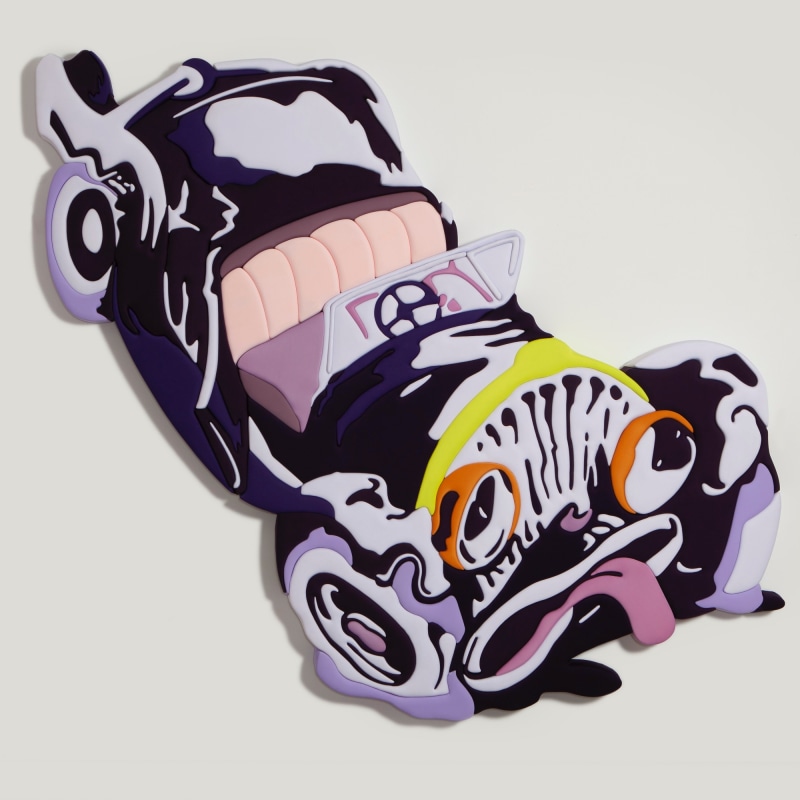
Collected notes from the artist
Topsy Turvy. Ev’rything is upsy daysy, – Clopin Trouillefou in the The Hunchback of Notre Dame, Disney animated film, 1996.
Blood was everywhere.. I looked out toward the ocean and saw the blood on the window had merged into the sunset; I couldn’t tell where one ended and the other began. – clinical psychologist Kay Redfield Jamison describes her own experiences of bipolarity, 2016, as quoted in Patricia Pisters’ essay ‘Carrie’s Sisters: New Blood in Contemporary Female Horror Cinema’, 2019.
[The theatrical is] linked with the perverted, the artificial, the unnatural, the abnormal, the decadent, the effete, the diseased. – as discussed by Andrew Parker and Eve Kasofsky Sedgewick’s Performativity and Performance, 1995.
Thomas Folland posits Rauschenberg’s use of theatricality acted as a way of navigating hetero-normative systems and upending them through the performance of queerness via scrambled codes and dislocation of legibility in an era of confessional and misogynistic painting. First discussed in his essay ‘Robert Rauschenberg’s “Red Show”: Theater, Painting, and Queerness in 1950s Modernism’, 2017.
There is a slippage of language, of walls, or “collapsed dominants” – as George W. S. Trow writes in his book Within the Context of No Context, 1981.
A fallen house of cards, cards painting the roses …red.
An exploded view drawing is a type of drawing that shows all of the parts of an assembly and how they fit together.
A thaumotrope is a 19th century optical toy which utilizes one image side by side with another on a disk to provide an illusion of motion, an important antecedent to the motion picture, specifically animation.
A multi-plane camera first utilized by Lotte Reiniger is a motion picture camera that replicates the parallax process by moving multiple artworks on different glass panes past a camera at different speeds to create deeper perspectival space in two dimensions.
Sure the picture is in my eye, but I am also in the picture. – as written by Slavoj Zizek in his book The Parallax View, 2006.
Red Alert is a 1958 novel by Peter George about nuclear war. ~ Dr. Strangelove or: How I Learned to Stop Worrying and Love the Bomb is a comedy film based on Red Alert directed by Stanley Kubrick. ~ Alex is the narrator in the novel Clockwork Orange.
Æ A ligature is a thing used for tying or binding something tightly, as well as when two letters are joined together into a single glyph like A and E in English or the Latin letters E and T to form an ampersand.
* An asterisk is a glyph in the shape of the star, when on the Internet, is commonly used to indicate a correction to a previous message.
~ An eñe has come to represent the identity of the Spanish language.
Red the house to filth.
Read the house to filth.
Helter Shelter is a Woody Woodpecker cartoon, first aired on 17 January 1955.
It is a cheeky riff on “Helter Skelter” which is a British word that means confusion or disorder. It is also:
1. A Beatles song from the double album The Beatles, 1968.
2. A novel (Helter Skelter: The True Story of The Manson Murders, 1974) about the Manson family murder scenario and preaching of Charles Manson in regard to the apocalyptic race wars as foreseen in the music of The Beatles.
3. A Simpsons cartoon episode wherein the Simpsons family need to find a temporary residence because their home has been infiltrated by termites, so they opt to be contestants on a reality TV show where families live as if it is 1895. This is also the last episode of the Simpsons where thetraditional ink and paint technique was employed, first aired 1 December 2001.
4. A type of slide for children commonly found in the United Kingdom.
The work of television (*art about television (pictures?)) is to establish false contexts and to chronicle the unraveling of existing contexts; finally, to establish the context of no context and to chronicle it. – as written by George W. S. Trow in his book Within the Context of No Context, 1981.
Yoko Ono’s Painting to Be Stepped On featured instructions to “leave a piece of canvas or finished painting on the floor or in the street,” suggesting the artwork as both the scene (of a crime) and trace, of a future accident. – as noted in Ralph Rugoff’s essay ‘More Than Meets The Eye’, 1997.
Alfred Jarry’s theory of the absurd anticipated the elevation of adolescent humor... and its veneration in popular culture. – John Cullen writes in his essay ‘In Praise of Folly: The Early Developments in Comics in Art’ in The Comic Art Show exhibition catalogue, The Whitney Museum of American Art, 1983.
The soul never thinks without an image. – as posited by Aristotle.
File under Jokes For Priests:
I need to exorcise more.
Let death come in me when you find some hidden intention of power. – as written by Miyó Vestrini, Brave Citizen, Todos Los Poemas, published posthumously 1994.
[Miyó Vestrini] shows us how to die in the most mundane of circumstances by disposing of our certainties; she herself might be wary of life’s little pleasures, but nevertheless indulges in them. –as written by M. Buna, 2019
Allegories are, in the realm of thoughts, what ruins are in the realm of things. – as written by Walter Benjamin, The Origin of German Tragic Drama, written 1925, published 1928.
History? I don’t have the faintest notion of it. – Donald, in the history section of a library. As found in Ariel Dorfman and Armand Mattelart’s How To Read Donald Duck: Imperialist Ideology in the Disney Comic, 1971.
Norman M. Klein writes of Max Fleischer’s Betty Boop Depression era cartoons from 1930-1933 that: Political critique in fables upside down can say much by reimagining indefinable. Once the hallucinatory allusions are made absolutely interchangeable with real events, a certain tension is lost. Usually the need for reversed allegory is less profound by then: the evil has emerged and done its worst. – in his book Seven Minutes:The Life and Death of the American Animated Cartoon, 1993.
David Deichtet writes (I laugh to myself as I write my own press release) of reproducing something already in the word: …such paintings constitute a “revolution against the given – in his essay ‘Unsentimental Education: The Professionalization of the American Artist’, 1992
“Many sick persons, on awaking, see everything in the color of the mo(u)rning sky, as if through a red veil: so, if in the evening they doze and wake again, the same appearance presents itself. It remains for some minutes, and always disappears if the eye is rubbed a little.— This state may last for a considerable time. – as written by Johann Wolfgang von Goethe in his book Theory Of Colours, 1810.
Colour … is new each time. – as written by Roland Barthes, 1975.
I would like to make a montage from the fragments discovered by others, but for a different purpose—mine! It is like cinema: I don’t need to play any part at all. My job is to link all the pieces up. – as said by Sergei Eisenstein, Beyond the Stars: The Memoirs of Sergei Eisenstein, translated by William Powell, 1995.
Norman M. Klein writes that the teachings on “perspective” and “Perspective Awry”, as a technique employed by theatrical architects in 1582, became so advanced that: Through tricks and pauses, entire worlds could be slid into place, swung from chaos to order…—these unstable worlds, imaginary political traumas could be reenacted, very operatically as special effects. Devils might drop from the ceiling…this special effects theology proved a way around censorship – in The Vatican to Vegas: A History of Special Effects, 2004.
… we should start with one frame at a time. To stop the film and to study the individual image—the photographically reproduced document, the photograph as such, the painting as such—is to remember that the image is not, in the words of Lisa Gitelman, “self-apprehending.” Gitleman insists that the material histories of technological reproduction should not be relegated to footnotes, that research must not forget “the real human agents involved, like the typesetters and printers of 1854, the microfilm camera operators and film processors of the twentieth century….the human agents were inkers and painters. Their history is also the history of secretaries, textile workers….It is an anonymous history. It is a history of drudgery. – Hannah Frank writes in her thesis Frame by Frame: A Materialist Aesthetics of Animated Cartoons, 2019 (released posthumously).
For further information please contact the gallery at +44 (0)20 7493 8611 or press@sadiecoles.com
